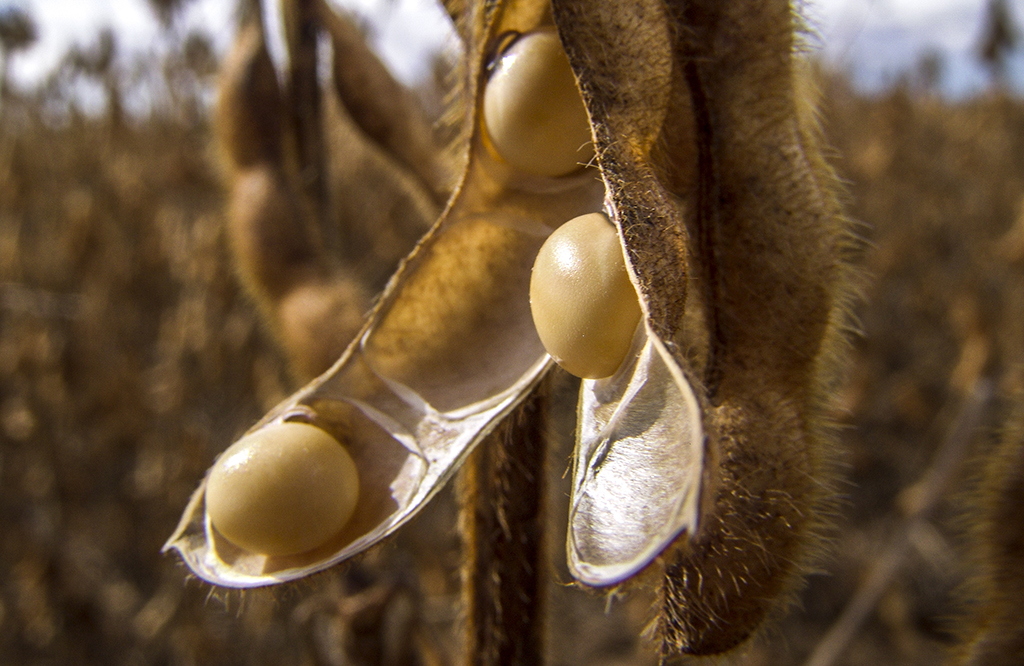
As the primary source of protein in most animal feed formulations, soybean is highly valued for its unique amino acid profile as a low-cost nutrient supply. Unfortunately, as nutritional as soybean can be, it also contains some anti-nutritional factors that can harm animals and humans. The most problematic enzyme, soybean trypsin inhibitor, must be properly destroyed before consumption.
Recent research has debunked some of the industry’s previous assumptions about trypsin inhibitors, forcing processors to take a closer look at how they handle TI levels to meet today’s standards. Here are the latest methods to effectively deactivate these enzymes when processing soybean.
What is soybean trypsin inhibitor?
A trypsin inhibitor (TI) is an enzyme most legumes produce, including soybeans, chickpeas, lentils, and other beans. It is a natural defense mechanism to protect these plants against pest attacks. Unfortunately, this defense drifts down the food chain to affect animals and humans who consume untreated soy products.
As its name suggests, a TI works by stopping the activity of trypsin — the primary digestive enzyme that helps monogastric (single-stomached) mammals break down protein. Trypsin inhibitors impair the animal’s ability to digest and absorb dietary proteins, causing slow or decreased weight gain, especially in swine and poultry.
Trypsin inhibitors impair the animal’s productive performance, and these enzymes can damage intestinal health over time. Elevated TI consumption can result in digestive diseases, causing an enlarged pancreas in poultry, known as pancreatic hypertrophy. Trypsin inhibitors can be detrimental when the ultimate goal of feed conversion is healthy weight gain.
Raw soybeans typically contain 30,000 to 50,000 TI units per gram. Safe levels for animal feed traditionally range from 10,000 to 15,000 TI units per gram, although some feed mills are pushing for even lower levels today. To meet these evolving industry standards, processors must understand how to deactivate soybean trypsin inhibitor.
Also read: Controlling the Moisture Content in Soybean Processing
Destroying trypsin inhibitors
In the past, neither feed nor oil mills paid too much attention to TI levels. Instead, they focused on another anti-nutritional factor in soybean called urease, which converts urea into ammonia, causing toxicity and even death in some animals. Since urease is easy to kill with heat and much easier to measure than TI, most mills just assumed that destroying urease would inactivate trypsin inhibitors, too.
But now we know that’s not the case. In 2019, new research found no correlation between urease activity (UA), measured with a simple pH test, and trypsin inhibitor levels, which are more complicated to calculate. Although both enzymes can be deactivated with heat, the exact temperatures and residence times can be a tricky balance to strike for complete deactivation.
During processing, soybean requires enough heat to destroy the anti-nutritional factors — but not too much heat, which could degrade the protein quality in the meal, decrease the digestibility of amino acids, and increase oxidation in the oil. In other words, heat treatment can be a double-edged sword because overcooking soy is just as dangerous as not cooking it at all.
Also read: Using Heat to Reduce Trypsin Inhibitors and Urease
The right temperature
Heat treatment is widely accepted as the most effective method to deactivate soybean trypsin inhibitor while enhancing protein digestibility. Since heat is applied throughout several processing steps, adopting a big-picture view is critical to optimize overall heat exposure. The entire thermal process might encompass:
- A screw press like the Anderson Oil Expeller® generates mechanical heat while crushing soybeans to separate the oil from the solid material. This frictional heat promotes optimal protein and fat composition in the final product, but this alone is not enough to destroy all the anti-nutritional factors.
- An extrusion system like the Anderson Dox™ Extruder works ahead of the screw press to cook, dry, and shear the soybean material. With a short residence time of 20 to 30 seconds, the Dox cooks the seed quickly to retain the quality of the protein and the amino acid profile. Although the Dox can reduce trypsin inhibitor levels below 15,000 TI units per gram, this may not be low enough for every market.
- Seed dryers further upstream ahead of the extruder, which also greatly impact soybean trypsin inhibitor levels. Whether a mill uses traditional grain dryers, fluid bed dryers, or other systems to lower the moisture content of the seed material before extrusion, the exact temperature range and residence time make all the difference in the final TI level.
Striking the perfect balance of time and temperature isn’t a simple equation; it depends on the interplay of several different factors — from the moisture level of the soybean material to the specific expeller and extruder being used to the other pieces of equipment in the processing stream.
A balanced approach with Anderson
The oilseed processing experts at Anderson International have decades of experience enhancing oil mills to process soy efficiently and profitably. Leveraging this expertise, we’ve developed an extrusion-based processing system that optimizes heat exposure to achieve the desired levels of these key soybean metrics:
- Soybean trypsin inhibitor levels under 10,000 TI units per gram
- Urease activity below a pH level of 0.2
- Protein solubility above 75% for optimal digestibility
Whether your processing operation requires an expeller, extruder, or other upstream and downstream equipment, Anderson can engineer a complete system designed to minimize soybean trypsin inhibitor levels and maximize profit margins.
Ready to destroy TI levels in your soybean processing plant? Contact Anderson International to learn how to effectively deactivate these enzymes today.